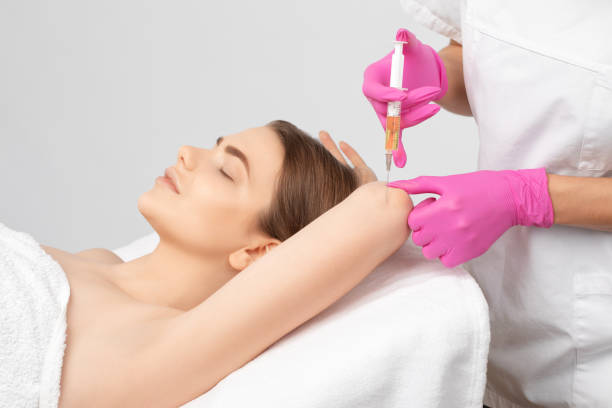


From sports injuries to hair loss to skincare, PRP is making waves for its natural, minimally invasive approach.
In recent years, medical advancements have increasingly looked inward—literally—to help the body heal itself. One such innovation is Platelet-Rich Plasma (PRP) Therapy, a regenerative treatment that uses a component of your own blood to accelerate healing in various parts of the body. From sports injuries to hair loss to skincare, PRP is making waves for its natural, minimally invasive approach. But how exactly does it work, and is it right for you? Let’s break it down.
PRP stands for Platelet-Rich Plasma, a substance derived from your own blood. Blood is made up of red cells, white cells, plasma, and platelets. Platelets are best known for their role in clotting, but they also contain growth factors—proteins that help with healing tissue, stimulating cell regeneration, and reducing inflammation.
In PRP therapy, your blood is drawn and placed in a centrifuge to separate out the platelets and concentrate them in plasma. This platelet-rich solution is then injected into the area of concern, kickstarting the body’s natural healing process.
The principle behind PRP therapy is biological healing. By injecting a concentrated dose of your own growth factors directly where they’re needed, the body gets an extra boost to repair itself more efficiently. While PRP doesn’t replace surgery in severe cases, it can enhance recovery, reduce pain, and improve function—sometimes even delaying or avoiding the need for more invasive procedures.
PRP has been studied and used in various medical fields. Here are some of the most common applications:
Athletes like Tiger Woods and Rafael Nadal have famously turned to PRP to recover from injuries. PRP is commonly used to treat:
PRP injections into the scalp can stimulate hair follicles, increasing hair growth and thickness—particularly in patients with androgenic alopecia (pattern baldness).
In skincare, PRP is often associated with the so-called “vampire facial,” where PRP is combined with microneedling to rejuvenate skin, reduce fine lines, and improve texture and tone.
Dentists use PRP to promote faster healing after procedures like tooth extractions, implants, and gum surgery.
The process is relatively quick and simple:
Most sessions take under an hour and involve little to no downtime. Some soreness or swelling at the injection site is normal.
Because PRP uses your own blood, the risk of allergic reaction or disease transmission is minimal. However, it’s not for everyone. People with bleeding disorders, low platelet counts, or severe anemia may not be suitable candidates.
Side effects are rare but can include:
It’s crucial to receive PRP treatments from a licensed and trained medical professional to ensure safety and effectiveness.
While PRP therapy offers promising results, it’s not a miracle cure. Success varies depending on the condition being treated, the severity, and the patient’s overall health. It works best when combined with other treatments like physical therapy, skincare regimens, or lifestyle adjustments.
A consultation with a specialist is the best way to determine if PRP is appropriate for your needs.
PRP therapy represents a compelling blend of natural healing and modern medicine. By harnessing the body’s own regenerative powers, it offers a safe and effective option for those seeking recovery, rejuvenation, or restoration. As research continues to evolve, PRP is likely to become an even more powerful tool in the world of personalized medicine.
